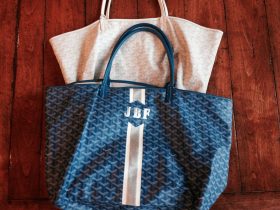In recent years, the world of printing has undergone a dynamic transformation, ushering in technologies that not only streamline the creative process but also elevate the final product. One such innovation making notable waves across apparel, accessories, and promotional merchandise is DTF printing in South Africa. This modern method has emerged as a versatile solution for those seeking sharp detail, vivid colours, and unmatched flexibility. As the demand for personalised products increases, DTF (Direct-to-Film) printing is offering artists, entrepreneurs, and businesses a convenient and reliable way to transfer their visions onto fabric.
Whether it’s a one-off T-shirt for a special occasion or a large-scale batch of branded tote bags, this technology ensures excellent results with fewer limitations compared to traditional techniques. The growing interest in South Africa reflects not only the practicality of this method but also its ability to meet the evolving needs of a modern, style-conscious market.
How It Works — Simplicity Meets Precision
Direct-to-film printing operates by printing a design onto a special film, which is then coated with a powder adhesive and transferred to a surface using heat. Unlike earlier systems that required pretreatments or had restrictions regarding fabric type, DTF printing offers a more straightforward process with broad material compatibility. It supports cotton, polyester, nylon, blends, and even leather — a feature that opens countless doors for both fashion designers and small business owners.
Because of its simplicity, many entrepreneurs in South Africa are turning to this technique as a cost-effective way to launch or scale their ventures. With minimal setup time and equipment that fits into small spaces, it offers a powerful starting point for businesses aiming to deliver high-quality results without substantial overhead costs.
Why Demand Is Growing — Speed, Quality, and Versatility
The success of DTF printing in South Africa is deeply connected to the fast-paced nature of consumer demands today. People want their custom garments quickly, and they don’t want to compromise on detail or durability. Traditional methods, such as screen printing, although effective for large runs, require more time, effort, and materials, especially when dealing with multicolours or complex designs.
DTF printing provides a striking balance between speed and quality. The prints produced are not only soft to the touch but also resistant to cracking, peeling, and fading, which is crucial for items that are meant to be worn or washed regularly. Moreover, the range of colours achievable through this method makes it ideal for everything from corporate uniforms to fashionable streetwear.
In a climate where versatility matters, this method empowers creators to produce smaller quantities profitably, supporting both personalised orders and short-run collections. It is precisely this adaptability that continues to attract attention from designers, event organisers, and marketing professionals.
Local Accessibility and Creative Possibilities
With a growing network of suppliers, machines, and service providers emerging nationwide, the accessibility of DTF printing in South Africa is steadily improving. Many printing hubs are now equipping themselves with the tools to support this technique, offering their clients quicker turnarounds and greater design freedom.
The method’s user-friendly nature allows for experimentation with colour, texture, and size, creating opportunities for everything from logo prints and graphic illustrations to intricate photographic imagery. For emerging artists and start-ups who previously found commercial printing inaccessible or financially burdensome, this method changes the landscape entirely. It invites creativity without complexity, supporting both expression and enterprise.
Sustainability and Cost-Effectiveness—A Future-Focused Approach
Another advantage of this modern technique is its potential to reduce waste. Unlike screen printing, which often involves excess ink, screens, and chemical washes, DTF printing uses just the amount of material necessary. It also produces less off-cut waste since there’s no need to cut out designs manually before applying them.
As environmental consciousness rises across industries, this lower-impact method aligns with global trends encouraging mindful production practices. Businesses not only save time and resources but also promote more responsible consumption. The combination of efficiency, affordability, and lower waste makes it appealing for both the budget and the planet.
Conclusion:
In conclusion, the demand for DTF printing in South Africa is not a fleeting trend but a reflection of how the creative, retail, and branding sectors are evolving. It presents a practical, efficient, and high-quality solution for those seeking to customise garments or promotional items with precision and vibrancy.
Whether you’re an entrepreneur entering the fashion market, a local artist hoping to share your work, or a business owner in need of consistent branding tools, this technology offers an accessible gateway to professional results. As the local market embraces the benefits, it’s clear that this printing method will continue to shape the future of customisation, one transfer at a time.










Leave a Reply